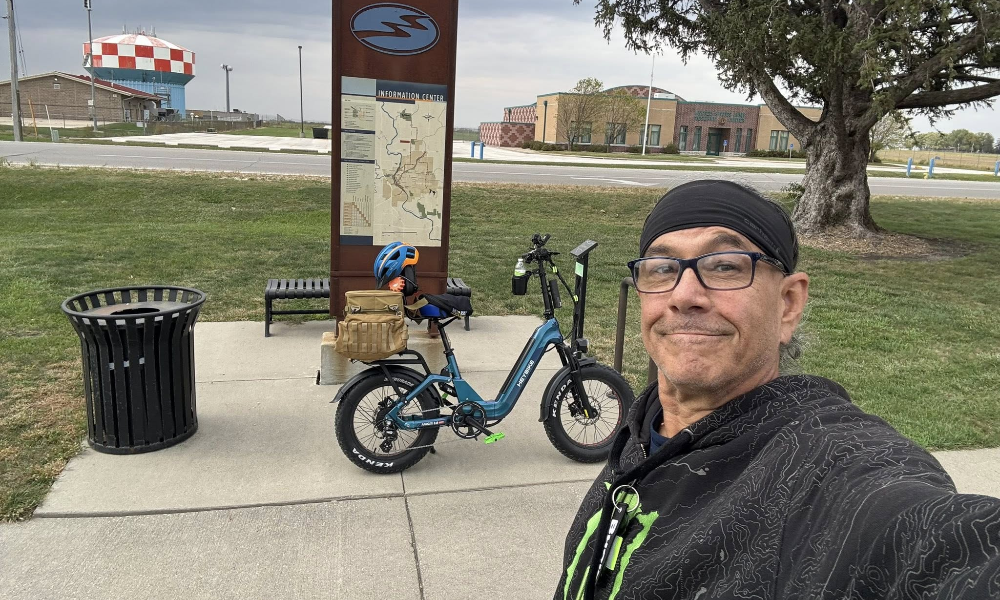Anywhere in the body that it embodies, arthritis is a genuine nightmare. But, for bikers, the most aggravating and crippling types of arthritis affect the joints in their forearms, wrists, or legs.
Many senior people with arthritis stop using bikes. That is a great shame because there are several bikes today that can lessen the strain on the injured joints and let them keep cycling for a very long time.
What Kind of Bikes are Good for Seniors with Arthritis
The following types of bikes are all suitable for senior people with arthritis. These bikes will suit you if you are searching for the finest bike for sore knees.

Step-Through E-bike
The step-thru E-bike is the best solution for people with arthritis in their wrists, elbows, knees, and hips. Inflammatory arthritis is reduced in those areas due to the style of handle design, which lessens pressure and strain on the wrist and elbow. These bikes allow the rider to move without pedaling if they have arthritis in their hips or knees, making them helpful for the knees and hips.
Older Trikes
Recall the tricycles you rode as a child. The same idea applies to adult trikes. Similar to cruiser bikes, these three-wheeled adult-sized bikes are designed for recreational cyclists seeking comfort and stability. Trikes are a great option for a beginner cyclist because they do not require much riding expertise. For riders worried about falling off, the three wheels with a stable, balanced feeling.
E-bike Cruiser
Using a cruiser ebike is a terrific method to relieve the strain on the rider's joints and let the bike handle all other jobs. The user may sit entirely upright on the bike because of how the seat is positioned. Even though it may not appear significant, this enables the rider to sit on the bike without bearing any weight on their wrists and elbows, relieving much strain from the painful areas.
Recumbent Bikes
Pedals on a recumbent bike are in front of you rather than beneath you, allowing you to pedal while semi-reclining. Anyone who needs back or neck support or wants to ease the strain on their knees should choose this bike. Some recumbent bikes additionally use hand cycles than conventional foot pedals, removing the need for your legs to move the bike forward.
Factors to Consider when Choosing Bikes for Seniors with Arthritis
When buying a bike as an older adult, your primary concerns should be how you intend to use it, where you want to use it, and any potential physical limits you may have. For instance, if you want a bike for commuting, search for something simple, like a cruiser or adult tricycle. A recumbent bike can be a better option for knee or back issues. A tricycle might be the best option if balance is your main concern. In addition to a good fit, search for a bike with some built-in safety and comfort features, such as:
An Organized Design
Bikes with a step-through design lack a bar that connects the front of the bike to the seat, making it simpler to get on and off.
Side View Mirrors
These mirrors make it possible to see what is behind you without turning your head, which is beneficial for older neck flexibility concerns.
A Bell or a Horn
To alert others to your approach, you must use some form of noisemaker.
Lights
Bike lights are essential for all riders, including those who do not intend to ride at night or early morning. They increase your visibility.
Tips for Biking with Arthritis
Although it varies, arthritis can be a crippling ailment. Some individuals have hand arthritis. The emphasis should be on choosing a bike with broader handlebars and an upright riding position to relieve the strain on these cyclists.
Other riders may experience problems with their knees and hips, making it tricky to balance and lift their legs. The finest tricycle for these riders is one with a step-through. They will find it simple to settle into their position on the seat due to the low entry point.
For riders with general arthritis, a more recent design—like the Relaxed Body bikes—might be the ideal choice. The expanded frame and riding position is excellent for easing joint and muscle tension, A cyclist can ride farther and more comfortably as a result.
Never forget to use a properly fitting helmet and cozy, visible clothing. Take your phone, cash, and even your insurance card when biking. Bring your medical alert bracelet if you have one, and let someone know you are going for a ride. Keep an eye on the weather and stick to bike-friendly routes, lanes, and trails.
Conclusion
Although it might often seem as though cycling is over when arthritis first appears, this should not be the case and does not have to be. There must be a terrific bike out there that will make cycling pleasurable again for you, whether you experience the pain and suffering of this disease in your hands or your legs.
Latest Stories
3000 Miles of Pure Joy: Greg’s Story with the Heybike ALPHA | Heybike Community
At 68, Greg conquered 3000 miles on his Heybike ALPHA ebike through Minnesota's trails. Every ride brought him fun, fitness, and freedom!
Freedom on Two Wheels: Ryan's Thrilling Rides on Mars 3.0 | Heybike Community
Ryan Davis shares his riding story on Heybike Mars 3.0 ebike. Have a look at his all-terrain adventures to see how the Mars 3.0 brings him true freedom.
From Walker to Rider: Darrel Rediscovering Youth and Joy on Ranger 3.0 Pro | Heybike Community
At 59, Darrel Abbe found youth and joy again riding the Heybike Ranger 3.0 Pro electric bike with his wife. Explore their story and the thrill of e-biking.



Share:
6 Cycling Benefits for Mental Health
Magnesium Alloy E-Bike is Changing the Game
1 comment
I’d like to see some trikes in your advertising !!!